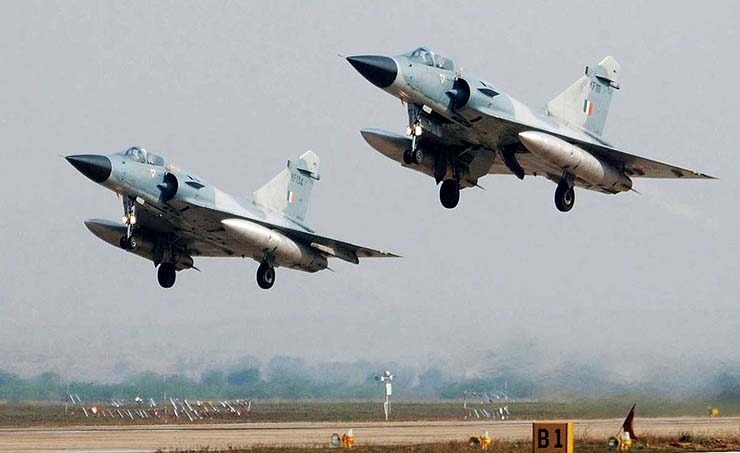
EVER since Pakistan conducted the nuclear tests, it has been teasing India with the threat of using the nukes, just as madman would do. The strategic deterrence posture of Pakistan has been based on its doctrine of first-use of nuclear weapons against any conventional attack on Pakistan, especially from India. On numerous occasions, over these three decades (factually wrong), it has, at the drop of a hat, threatened the use of nuclear weapons against India, whether tactical or strategic.
It, thus, convinced the world that it considers nuclear weapons as weapons of war and not as weapons of deterrence and hence, successfully discouraged India from using its conventional superiority against it for its unrelenting and unbending export of terrorism.
Pakistan’s strategy is based on not just convincing the world that they were irrational enough to use nuclear weapons, but also, in turn, convincing itself that India was prudent enough to believe in Pakistan’s irrationality and would therefore, never risk calling Pakistan’s bluff. Rationality can, however, be misleading, and irrationality is a game two can play. Given its history, Pakistan has, more often than not, played irrationally in issues against India; on the other hand, it has been quite absurd for India to react judiciously in the face of incessant acts of irrationality on the part of Pakistan. Indian leadership had been advised often in the past to call Pakistan’s bluff, but until the IAF conducted the airstrikes on the Jaish-e-Mohammed (JeM) terrorist camp in Balakot, the political leadership had always preferred to play according to the Pakistani playbook, much to the chagrin of the advisers. Balakot has, however, changed the rules of the game, not just India’s, but also perhaps Pakistan’s.
The Retribution
After the horrific suicide bomber attack on a CRPF convoy on February 14, 2019, there was widespread anguish and anger amongst the uniformed personnel, the citizens, and amongst the political leadership (but in varying degrees!). The unanimous call for avenging the deaths of the 40 CRPF personnel, led the political leadership to plan a befitting reply. While enough has been written/spoken about the planning process, the choice of weapons and the execution of the airstrike per se, a short description, maybe a repeat, would bring to the reader’s attention some details that may have been missed out.
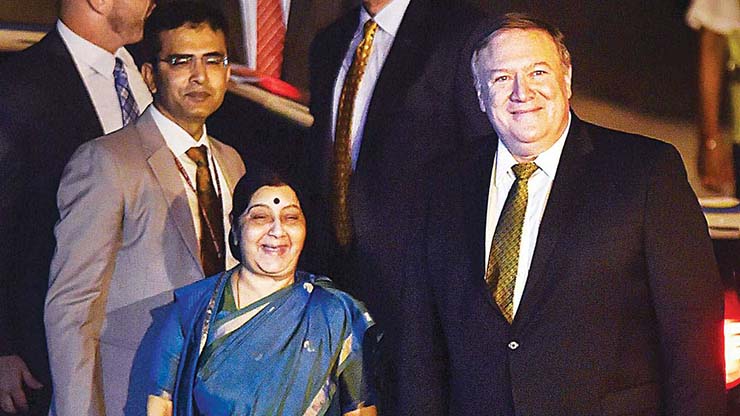
It was a foregone conclusion that the Pakistan-based terrorist group, JeM, would be punished, but the methodology was not told to the nation, except that the Security Forces had been given a free hand! The response to the terror attack on the Uri Camp was a strike by the Special Forces, about 4-5 kms across the Line of Control (LoC); would this be a similar strike or something more, it was left to speculation.
On February 16, at the Pokhran firing range in the desert of Jaisalmer, the IAF demonstrated its live firepower prowess to a distinguished audience as a part of Exercise ‘Iron Fist’, a biennial exercise, also known as ‘Vayu Shakti’. All fighter and transport aircraft, helicopters and missile systems in the inventory of IAF participated to ‘show off’ their combat capabilities. The audience comprised of the President of India, the Prime Minister, and the Defence Attachés of foreign nations; it is not known if the Attaché of Pakistan was invited or not! Coming barely two days after the terror attack, the symbolism of this exercise was telling and the speculation ended 10 days later when late in the night of February 25-26, a task force of the IAF comprising of 12 Mirage 2000 (M-2000) attack aircraft, 04 SU-30MKI escorts, and 04 force-multipliers got airborne from various bases, to strike Balakot in Khyber Pakhtunkhwa, deep inside Pakistan in the early hours of February 26, crossing not just the LoC, but also the International Border (IB).
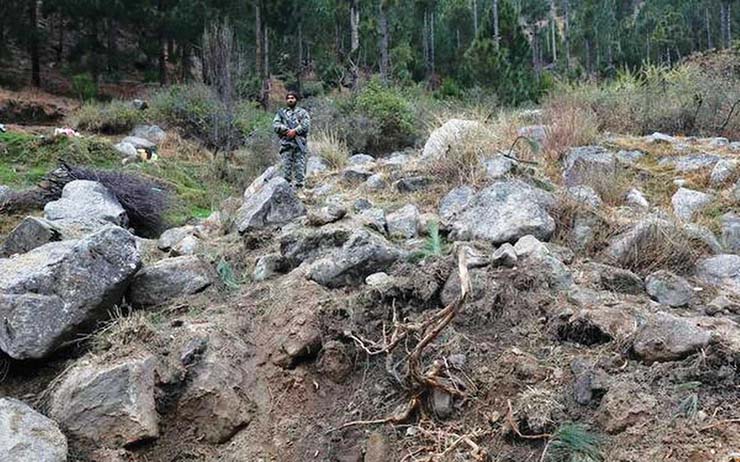
It was a defining moment when India decided to take advantage of the unique capabilities of airpower, combined with accurate intelligence inputs and backed by political resolve. Airpower was used across the LoC and IB for the first time since 1971. Many analysts/strategists agreed to this forceful indicator of intolerance to terrorist activities sponsored by Pakistan; there are, however, some sceptics, who still believe it to be a miscalculation against a nuclear armed state!
Choice of Target and Attacking Force
Immediately after the Pulwama attack, intelligence agencies had received reliable information that the JeM was planning to execute more suicide attacks on the security forces in J&K, and elsewhere in India too. This input necessitated an early retaliation by India. Intelligence agencies were tasked to prepare a list of targets that would provide maximum damage to the terror group with little or nil collateral damage to civilians and military; of a list of six targets, Balakot training camp was at the top.
Credible intelligence inputs provided information that 300 or more JeM cadre, including about 25 senior commanders and trainers, would assemble at the Balakot training camp on the night of February 25, to celebrate the success of the Pulwama attack and to plan further strikes. The Indian security officials were more than pleasantly surprised how situation panned out in their favour. First, JeM, which many would have presumed to be extra cautious after the February 14 attack, decided to assemble its members in such large numbers, under one roof. Second, the assembly location was at a great distance from civilian settlements and military camps, making it an ideal choice for a target. And third, the training camp at Balakot housed a firing range, social media war-room and other modern infrastructure to help plan for further strikes in India. Luck was clearly on its side as the Indian security establishment went about planning the air strike with meticulous professionalism.
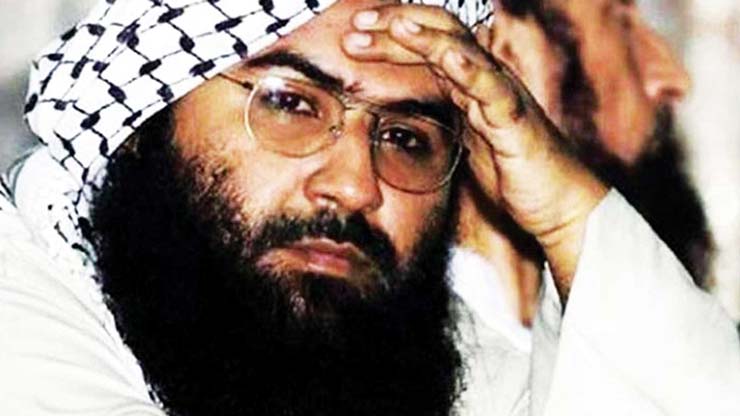
The M-2000, first inducted in the mid-1980s, was the weapon platform of choice for the IAF, with advanced avionics, new multi-mode target radars, reconfigured glass cockpit, state-of-the-art warfare systems, and the capability of launching advanced missiles. Apart from these capabilities, the M-2000 has had a very healthy flight safety record as also a high serviceability state. In comparison to the SU-30 MKI, the M-2000 is faster, and has the capability to hit long-range targets with greater precision. This aircraft, armed with laser-guided bombs, was also the preferred choice in 1999, during the Kargil conflict; it proved its worth with successful strikes on Tiger Hill, Muntho Dhalo and Point 4388. For the strikes on Balakot, the M-2000 was armed with Popeye-2 air-to-ground missiles and Spice-2000 precision guided bombs.
That the target selection and the choice of aircraft to cause maximum damage, were correct, is borne out by the ceaseless radio chatter that was picked up by the intelligence agencies, indicating that the IAF had indeed wreaked havoc on the camp and killed many top commanders. As was expected, Pakistan immediately went into a denial mode and claimed ‘damage to some trees in a forest and a single crow killed’! Yet, Pakistan Air Force (PAF) launched a retaliatory strike on the morning of February 27, to ‘avenge’ the crow!
Diplomatic Offensive
In a major diplomatic offensive against Pakistan, immediately after the Pulwama terror attack, India held a briefing to highlight Pakistan’s role in using terrorism as an instrument of state policy; in attendance were envoys of 25 countries, including from P5 nations — US, China, Russia, the UK and France. Apart from the briefing, India also initiated economic measures against Pakistan and withdrew the ‘most favoured nation’ status granted to it in 1996 and never reciprocated by Pakistan; a 200 per cent customs duty on items imported from Pakistan, was also imposed.
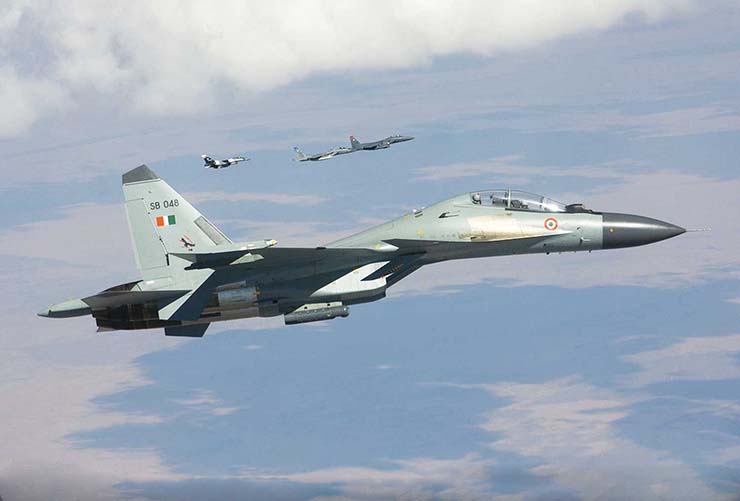
Immediately after the announcement of the Indian airstrike by the Ministry of External Affairs (MEA), Sushma Swaraj, the External Affairs Minister, spoke to the US Secretary of State, Mike Pompeo, and also to the foreign ministers of China, Bangladesh, Afghanistan and Singapore to brief them about the Indian action against the JeM; all of them expressed understanding of India’s position. A briefing of envoys was also conducted and evoked widespread support for India as the airstrikes were aimed at a non-military facility and was not intended to cause any civilian casualties. The envoys, however, were not surprised by the Indian action, as they had already been briefed on February 15, after the Pulwama attack.
The External Affairs Minister also represented India at the Russia-India-China (RIC) Summit, wherein India again received support to counter Pakistan-based terrorism. In the joint communiqué issued after the meeting that was held on February 27-28, the RIC “strongly condemned terrorism…and stressed that terrorist groups cannot be supported and used in political and geo-political goals”. It further stated, “…those committing, orchestrating, inciting, or supporting terrorist acts must be held accountable.” While Pakistan was not named, it was clear which country was being referred to! India, hinting towards China, asked for global cooperation to tackle the menace of terrorism; however, China was measured in its individual capacity and appreciated Pakistan’s anti-terror efforts!
Except for the Organisation of Islamic Countries (OIC), of which Pakistan is a founder member, there was no outright condemnation of the Indian airstrike by any nation, including China. Nonetheless, the OIC did not cancel the invite forwarded to India, as the ‘Guest of Honour’ to address the two-day 46th session of the Council of Foreign Ministers. The invitation had been extended by UAE Foreign Minister, much to the annoyance of Pakistan, which threatened to boycott the meeting; the Foreign Minister of Pakistan, did not finally attend the summit meeting on March 1-2. This was a major snub to Pakistan by its own Muslim community!
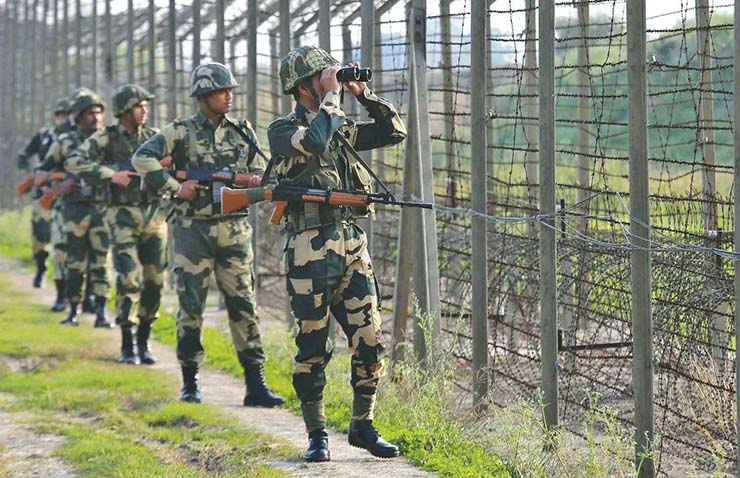
It is important for readers to note that this was the first time when India was invited to speak at an OIC summit, being neither a member nor having an observer status, despite having the third largest Muslim population in the world; nations like Russia and Thailand, which have a Muslim population in a significant minority, have been accorded observer status. Fifty years ago, in 1969 in Morocco, President Fakhruddin Ali Ahmed, then a minister, was deputed to attend the first summit of the OIC on the suggestion of Saudi Arabia, only to be humiliated because of an objection by Pakistan; the invitation was annulled and the delegation had to return midway!
What Next?
The Balakot airstrike represents the first time a nuclear nation has carried out an airstrike deep inside another nuclear-armed nation. It also busts the Western strategists’ theories about the certainty of reciprocal actions by India and Pakistan leading to a nuclear exchange. In addition, Pakistan’s misconception of being secure behind a nuclear screen stands shattered and exposed. The much belated use of airpower by India to strike a terrorist sanctuary has finally sent a very unambiguous message to Pakistan and terror groups alike: India is no longer apprehensive of Pakistan’s nuclear smokescreen.
What next then, is the question? Will India leave it as a one-off strike, or will it show its new-found determination to not be continually bled? India must bring Pakistan under sustained and multipronged pressure that it hurts Pakistan to the hilt. For such a result, however, India needs to start taking some actions itself. India has so far not declared Pakistan as a terror state; then how and why will the international community do so? India has always been shying away in the past from taking even non-military actions against Pakistan, such as withdrawing the MFN status, using Indus waters that it is entitled to do so; it is only now that India has begun to take some action, though the latter issue has generated bad international publicity.
India must face facts that Pakistan has been bleeding it through a proxy war for years, not just in J&K, but by providing tacit support to other insurgent groups too. It is a largely one-sided unconventional war; simply labelling it as ‘terrorism’ and appealing to world powers and the UN to take action is not sufficient; there is a need to formulate a comprehensive strategy to replace the existing ‘knee-jerk’ strategy. The larger picture is that Pakistan-sponsored terror is not likely to diminish in the near future, because terrorism continues to be an essential, if not the prime component of its military strategy and political objective against India. Rahmatullah Nabil, former Afghan spy chief, estimates Pakistan to be incubating 45-48 terror groups for different purposes; one is quite sure that a majority would be for action in India.

India needs more capabilities for penetrating terror hubs inside Pakistan, and not just through airstrikes or special-forces. The capability to do so should include technology, intelligence, and covert infiltration, with the sole aim to degrade the infrastructure and inflict unacceptable casualties on the terror cadre. This would require an all-round approach, which should include hard-drive diplomacy by MEA, sufficient funds for the military, technical and intelligence know-how, long-serving specialists and operatives who are not replaced every two years on political whims, and brought back to the task after every terror strike; all this and more has to be backed by strong political will.
Conclusion
The ‘surgical strike’ in 2016 warned Pakistan that the LoC would no longer be sacrosanct; Pakistan chose to ignore the message as is evident from the Pulwama attack. It continued to protect the JeM chief, Masood Azhar, with China’s support, from being designated as an international terrorist; the support continues even as this piece was being written. China has now, for the fourth time objected to the UNSC proposal to include the JeM chief under sanctions of UN Resolution 1267; this, however, may not be to China’s and its protégé, Pakistan’s benefit for long, as France, USA and other nations are contemplating a full discussion on the issue in the Security Council. During this discussion, which would be open and telecast live, China would have to explain its support for Pakistan, as this was the first time that 14 of the 15 Security Council members, permanent and the non-permanent, had supported the proposal.
China may be having its reasons not to designate the JeM chief as an international terrorist, but doing so for the fourth time, and against intense support for the proposal, is somewhat surprising and against the Wuhan spirit. India, hence, needs to revisit its relations with China, especially after the Wuhan Summit of April 2018 had supposedly brought about an understanding of each other’s concerns. China’s double standards in its dealings with India are quite visible now; while it expects India to treat its core interests with deference, the same deference is missing on China’s part towards Indian core interests. With strong international support for its actions against JeM, India needs to shed its deference towards China’s sensitivities from Tibet to Taiwan to Xinjiang.
India has disturbed the long-standing status quo of nuclear posturing by Pakistan, overcome some self-imposed inhibitions of crossing the LoC, and achieved success in the diplomatic arena as a consequence of its ability to harness hard kinetic power. This successful approach now needs to be adopted as a doctrine, to ensure that Pakistan does not ever miss out on this message.
Whatever the future holds, the airstrike over Balakot has signalled the beginning of a new phase in India-Pakistan dynamics. India must press on, while not lowering its guard.
–The writer is an IAF veteran








